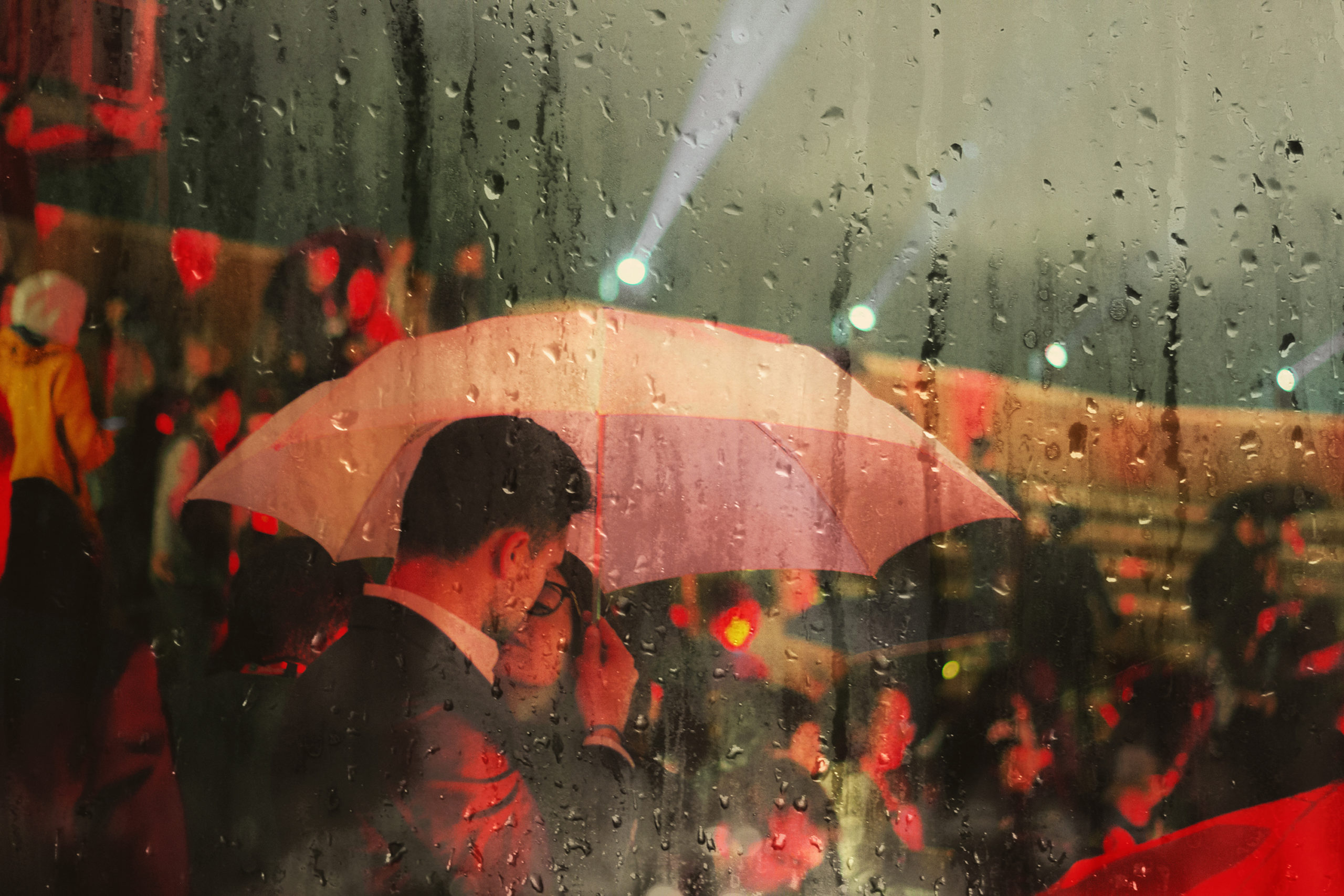All images by Alessio Trerotoli. Used with permission.
“This series is a sort of art therapy to me,” says Italian Street Photographer, Alessio Trerotoli. He adds, “…I’m a guy full of joy, irony, and love, but I know I have a dark side somewhere, and I need to accept it and to live with it.” He’s talking about Raindrop Blues, his series that mixes street photography and fine art to create a set of compelling and emotional images. It’s a refreshing twist on a genre that has risked becoming stale over the years. And when The Phoblographer first saw the work, we were excited at the thought of sharing it with our readers.
Trerotoli very kindly agreed to allow us to put him under the spotlight.
Phoblographer: Tell us about your emotional relationship with rain and how that is transmuted into your series, Raindrop Blues.
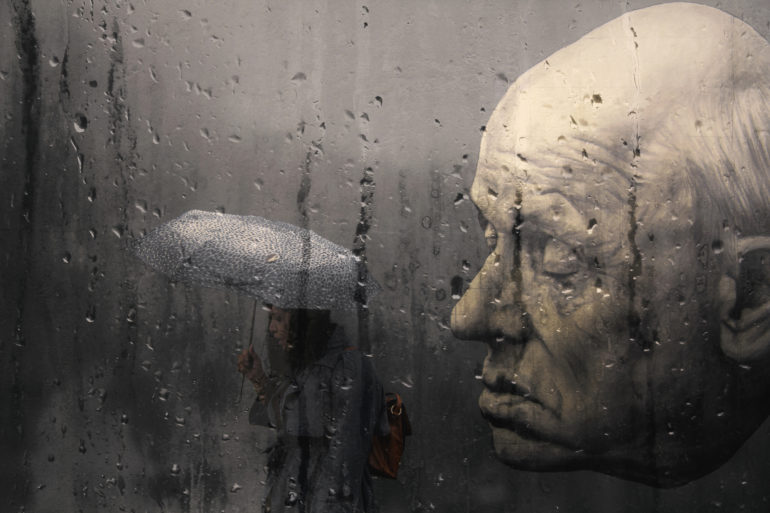
AT: I’ve always seen the rain not as “bad weather”, but as an amplifier of emotions. Many of us have experienced to dancing, crying or kissing someone under the rain, and these memories are more powerful thanks to the rain. Rain always strung along with my melancholy and my romanticism and with this series I used these two elements of my personality in an artistic way.
Phoblographer: Why did you decide to shoot the series as double exposures, rather than more traditional street photography?
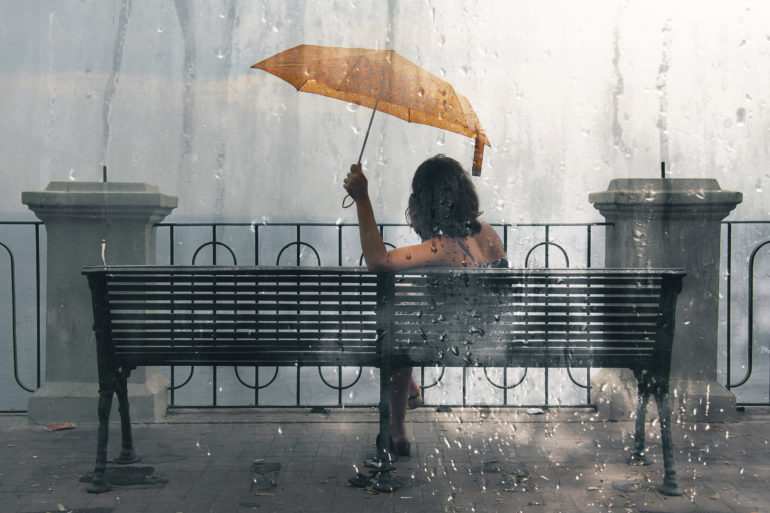
AT: Curiously I thought about this project during a very warm summer! I was looking at some pictures taken under the rain by Saul Leiter, one of my greatest inspirations, and then I looked at mine. I noticed that the only one that could transmit the feeling that I wanted to tell was an image that I took through the wet window of a bus. I had this idea to wrap every image with raindrops, to amplify emotions and create a different style of street photography, because by now it’s a photographic genre very common where it’s very difficult to be original.
“From an artistic point of view, the biggest challenge is to create images that are always different. They don’t show just a person with an umbrella, but create something that can invoke emotion.”
— Alessio Trerotoli
Phoblographer: Please tell us in more detail about the double exposure technique you used, and your process when out shooting.
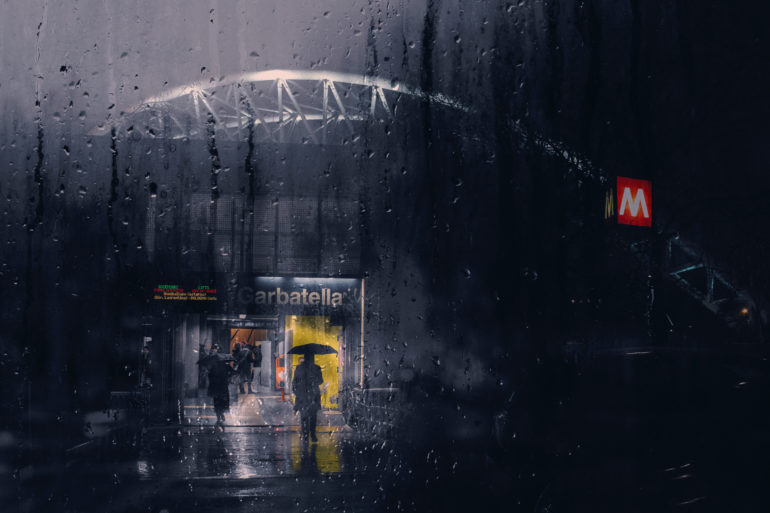
AT: Actually I don’t have a particular method. I go out with an umbrella taking pictures as a traditional street photographer. Then in post-production, I work on double exposures: in my archive, I have several images of wet windows that I took in the last years, so I choose the most suitable one to superimpose to the street photo that I took. The process is very simple, but the result is surely interesting.
Phoblographer: What was most enjoyable about creating the series?
AT: I like to explore streets and alleys, suddenly finding the right person to put in the image, or the color of an umbrella that perfectly fits with the background. These are all little sensations that feed my inspiration. The most interesting thing is that all the people that I photograph are so busy to face the flood that they don’t notice me while I’m shooting.
Phoblographer: What was the biggest challenge?
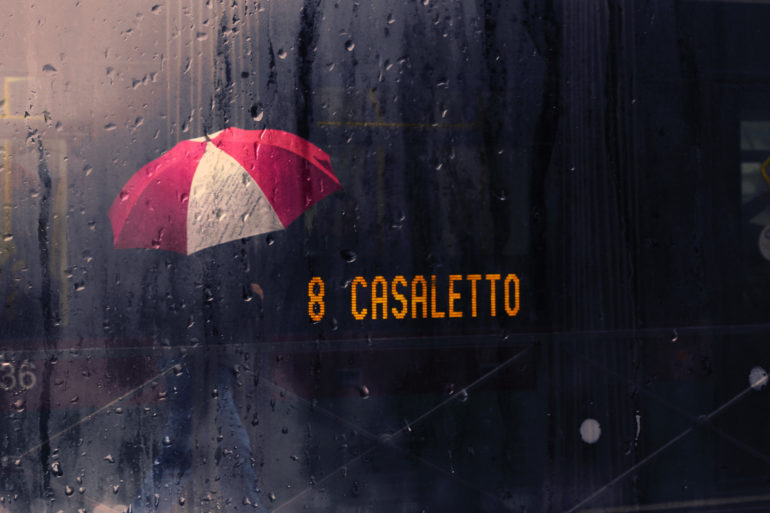
AT: My greatest worry is to avoid getting the camera wet and mostly the lens. During the first batch of shots, I created a sort of protection with a plastic bag, but it was really complicated to shoot, while also having the umbrella in the other hand. So I learned that I couldn’t shoot when there is a lot of wind, because water can really be an issue for my lens. From an artistic point of view, the biggest challenge is to create images that are always different. They don’t show just a person with an umbrella, but create something that can invoke emotion.
Phoblographer: From a psychological point of view, when looking at the images, what did you learn about society and culture?
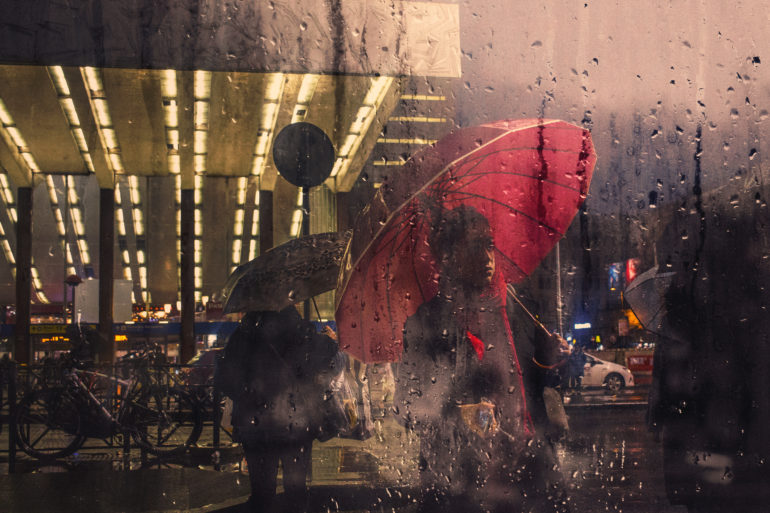
AT: Most of the images were shot in Roma, Berlin, Paris and Chicago, very big cities where it’s easier to feel alone even among the crowd: a sense of solitude and alienation that is very common in the big metropolis. It’s not accidental that in most of my images, characters seem profoundly alone. Maybe I just see what I feel, but shooting this series I can notice a sort of restlessness around me, like a melancholy never fully taking shape, but which is there, latent, in everyone life. Now for me, it’s a bit strange to look at these images without thinking about social distancing that we are facing in this period marked by Covid 19, it’s a bit scary.
Phoblographer: For us gear heads, what was your camera and lens combo?
AT: I have a Canon and I usually shot with a 24mm lens. I use to walk a lot so I prefer to have a light-weighted bag. I also have another lens of course, but I use it only when I need it, when I look for something different.
“…it’s that kind of dreamlike reality that I always wanted to realize without betraying traditional street photography…”
— Alessio Trerotoli
Phoblographer: Why does this system work best for you?
AT: I’m not obsessed with gear or lenses, I’m more focused on images. Once I read a quote that sounds perfect to me: “The best gear for a photographer is a good pair of shoes.”
Phoblographer: How do you measure the success of a series? Are awards something that matter to you?
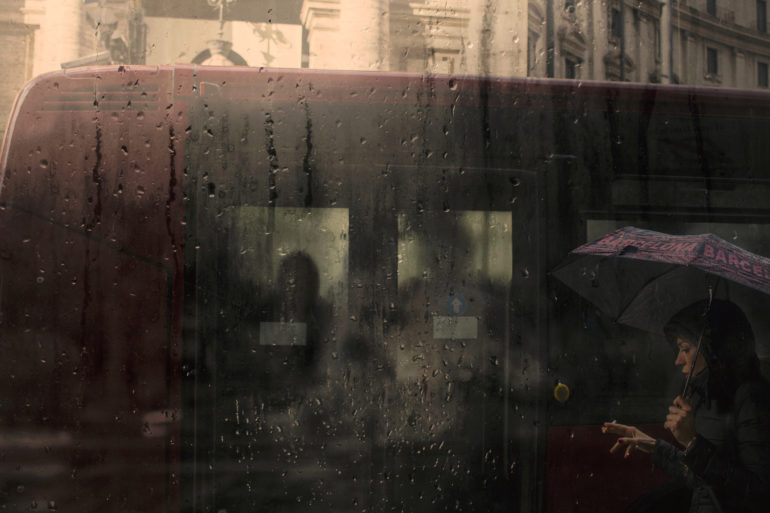
AT: I don’t give much importance to awards and recognitions. Of course, I’m happy for this kind of feedback and sometimes I send my images because festivals and awards can give great visibility to my works. But I find more pleasure when someone writes me an email telling me how my images inspiring him or her. People are my engine. For example, last year, some students from Hong Kong and Manchester wrote me an email, asking for some insights on my photos, because they were studying multiple exposure photography in their art school. This is the best award to me.
Phoblographer: These are fantastic images. Could a photobook be on the horizon?
AT: That’s a good point. A photobook is always in my thoughts. I would like to find a publisher, but it’s not easy to find someone interested in publishing street photography, maybe Kickstarter could be a solution. At the moment, I don’t know yet how to do, but I like thinking that a photobook will be one of my next steps. It will be my pleasure to send a copy to The Phoblographer, of course!
Phoblographer: Finally, how satisfied are you with the outcome of the series?
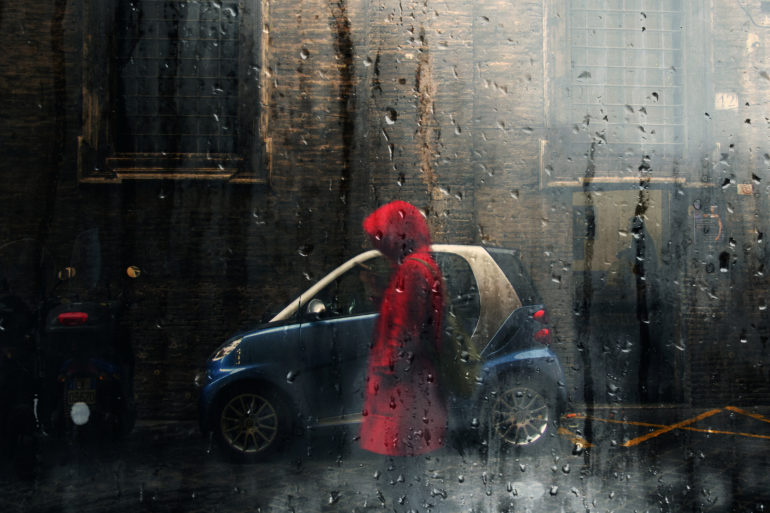
AT: Quite a lot actually, it’s that kind of dreamlike reality that I always wanted to realize without betraying traditional street photography — something I still love and I always do, during my travels or when I walk in my city, Roma. I believe in this series and I hope that it can give me the same satisfaction with other important series like Urban Melodies.
You can enjoy more of Alessio’s work by visiting his website.


